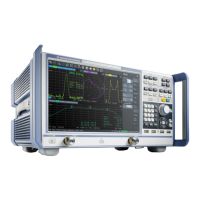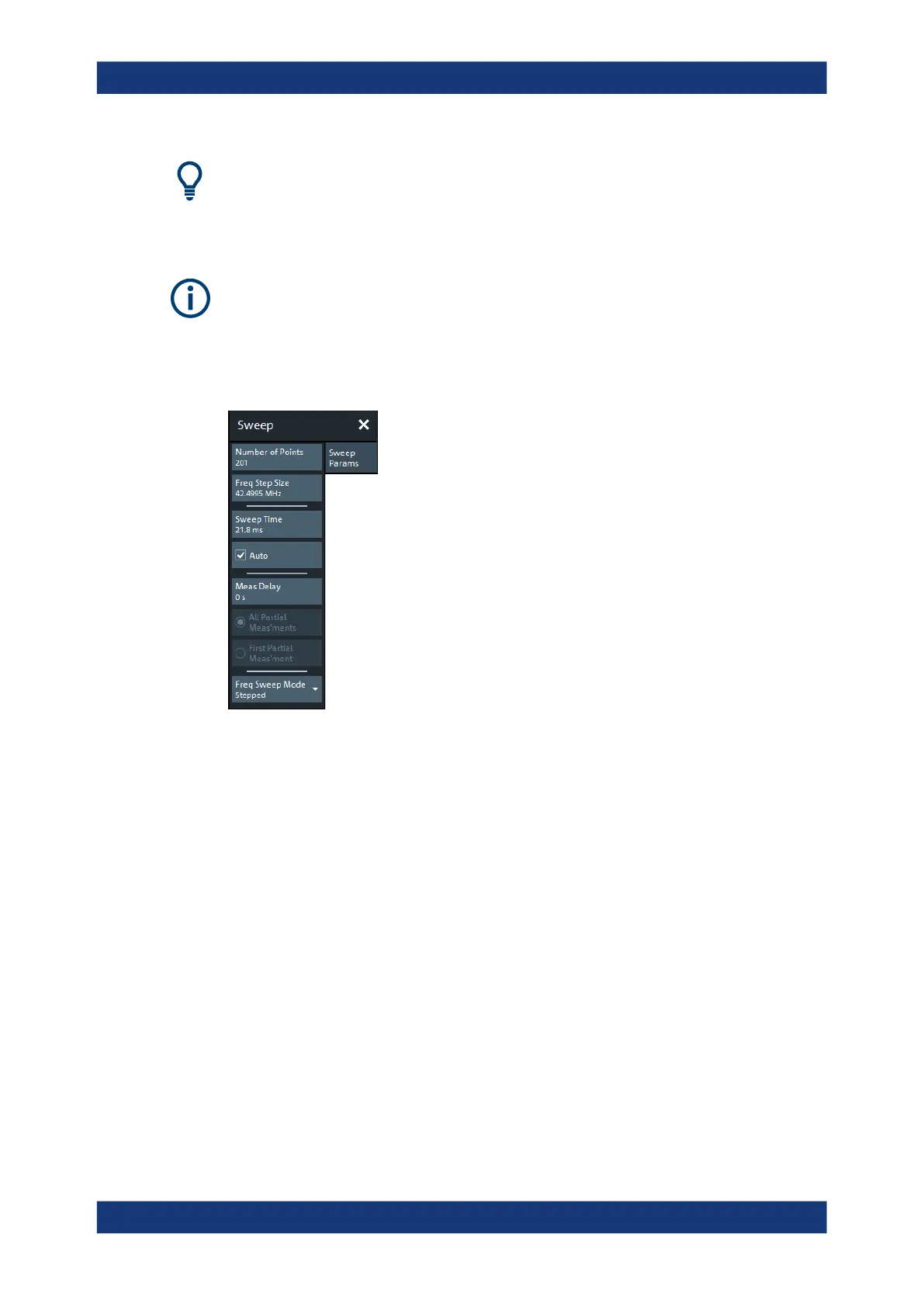GUI Reference
R&S
®
ZNB/ZNBT
391User Manual 1173.9163.02 ─ 55
Segmented sweeps
In "Segmented" linear frequency sweeps, the sweep parameters can be set independ-
ently for each segment. See Chapter 6.10.2.2, "Define Segments Dialog",
on page 399.
System error correction
In general, the system error correction is no longer valid after a change of the sweep
parameters. The status of the calibration is shown in the trace list. If the number of
points is changed, the analyzer interpolates the correction data. The calibration label
"Cal Int" is displayed. See also Chapter 5.5.4, "Calibration Labels", on page 166.
Number of Points
Sets the total number of measurement points per sweep. The minimum number of
points is 1 (measurement at a single frequency/power/time value). The maximum
depends on the analyzer type.
Sets the total number of measurement points per sweep. The minimum number of
points is 1 (measurement at a single frequency/power/time value), the maximum is
100,001.
Together with the sweep range defined in the Stimulus Tab of the "Stimulus" softtool,
this parameter defines the grid of sweep points. The step width between two consecu-
tive sweep points is constant on a linear scale (sweep types "Lin Freq", "Time" and
"CW Mode") or on a logarithmic scale (sweep types "Log Freq" and "Power").
The sweep points for linear frequency sweeps can also be defined using the Freq Step
Size.
Tip: Measurement time and screen resolution
Increasing the number of sweep points improves the resolution of the trace but increa-
ses the measurement time. The overall measurement time is composed of the hard-
ware settling time at the beginning of the sweep plus the sum of the measurement
times at each individual sweep point. Hence the measurement time increases roughly
linearly with the number of points.
Sweep Softtool

